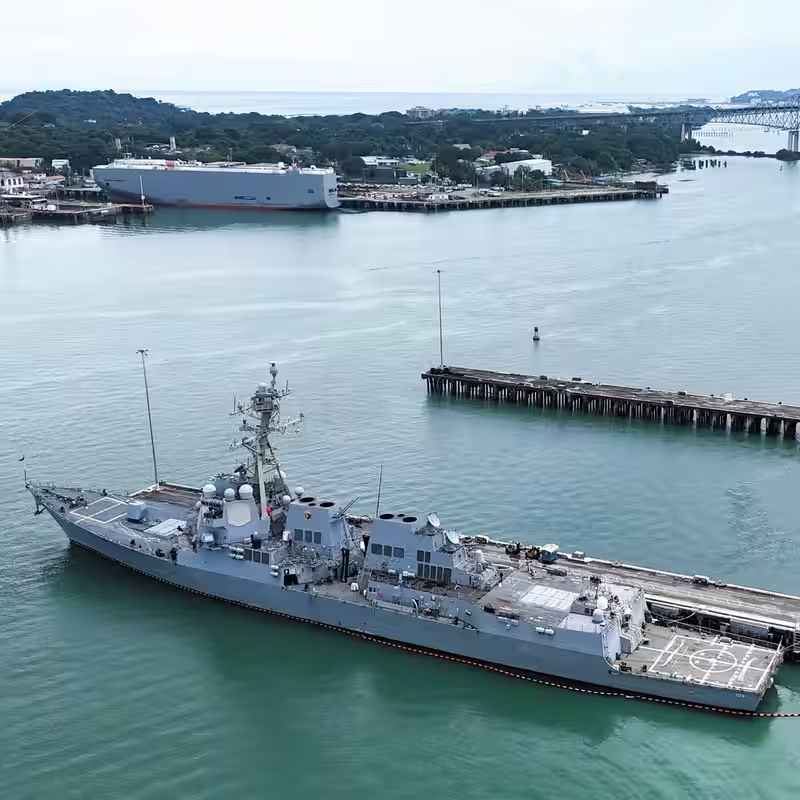Table of Contents
- What Happened in the Caribbean?
- Survivors Repatriated to Colombia and Ecuador
- Legal and Ethical Questions Mount
- Fentanyl Claims Under Scrutiny
- Broader Regional Military Buildup
- Sources
What Happened in the Caribbean?
On Thursday night, U.S. Special Operations aircraft launched a strike on a semi-submersible vessel cruising through the southern Caribbean Sea. According to three U.S. officials familiar with the operation, intelligence analysts had assessed the craft was carrying illicit drugs—though no physical evidence has been publicly confirmed.
The strike, part of a broader military campaign against suspected drug traffickers that began in early September, resulted in the deaths of two individuals described by President Trump as “terrorists.” Two others survived the explosion and were spotted minutes later amid wreckage and floating bales by surveillance aircraft.
Navy and Coast Guard helicopters quickly rescued the survivors and transported them to the amphibious assault ship USS Iwo Jima, which is equipped with medical facilities.
Survivors Repatriated to Colombia and Ecuador
By Saturday, President Donald Trump announced via Truth Social that the two survivors—nationals of Colombia and Ecuador—would be repatriated to their home countries “for detention and prosecution.”
While Colombia has not yet commented publicly, an anonymous Ecuadorian official confirmed the government was verifying the identity of one of its citizens. If confirmed, the individual would be brought back to Ecuador.
This move aligns with long-standing Coast Guard protocols for handling intercepted suspected traffickers outside U.S. waters. However, it also sidesteps thorny legal questions that would arise if the men were held as wartime detainees or prosecuted in U.S. courts.
Legal and Ethical Questions Mount
President Trump has repeatedly labeled those aboard suspected drug-smuggling vessels as “unlawful combatants,” asserting the right to treat them as enemy soldiers in an armed conflict—a stance legal experts widely dispute.
Traditionally, maritime drug interdiction has been a law enforcement matter: the Coast Guard would board, arrest, and process suspects through civilian courts. The shift to military strikes marks a dramatic escalation.
Had the survivors been sent to Guantánamo Bay, it could have triggered habeas corpus challenges questioning whether the U.S. is truly at “war” with drug cartels. Prosecuting them domestically would require admissible evidence—something not yet confirmed to exist.
Fentanyl Claims Under Scrutiny
In his Truth Social post, Trump claimed intelligence had “confirmed” the vessel was “loaded up with mostly fentanyl” and warned that “at least 25,000 Americans would die” if it reached shore.
However, according to the Drug Enforcement Administration (DEA), the Justice Department, and the Congressional Research Service, the current overdose crisis is driven primarily by fentanyl sourced from Mexico—not South America, where these semi-submersibles typically originate.
No evidence has been presented to substantiate the cargo claims or the projected death toll, raising concerns among policy analysts about the administration’s justification for lethal force.
Broader Regional Military Buildup
This incident occurs amid a significant U.S. military buildup focused on Venezuela-linked cartels and criminal gangs. Since September 2, the U.S. has conducted at least six such strikes in the Caribbean, reportedly killing 31 people total—including the two in this latest operation.
Critics argue the strategy conflates criminal activity with acts of war, potentially setting dangerous precedents in international law and human rights norms.
Sources
The New York Times: U.S. Is Repatriating Survivors of Its Strike on Suspected Drug Vessel
Drug Enforcement Administration (DEA)
Congressional Research Service




